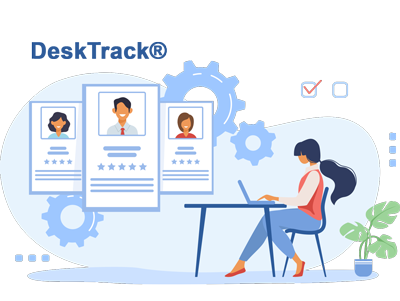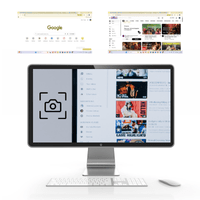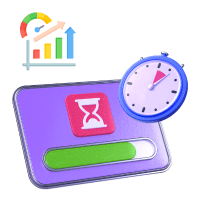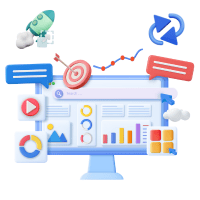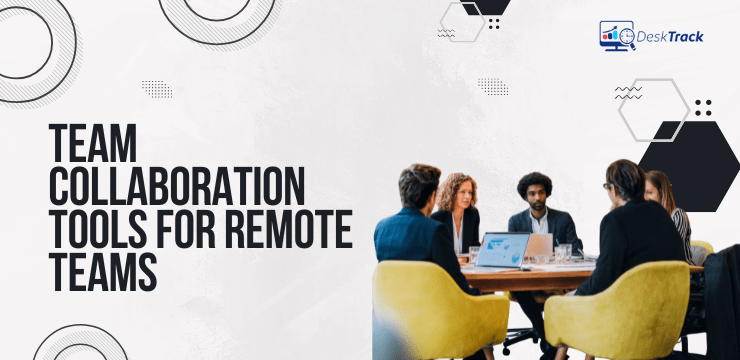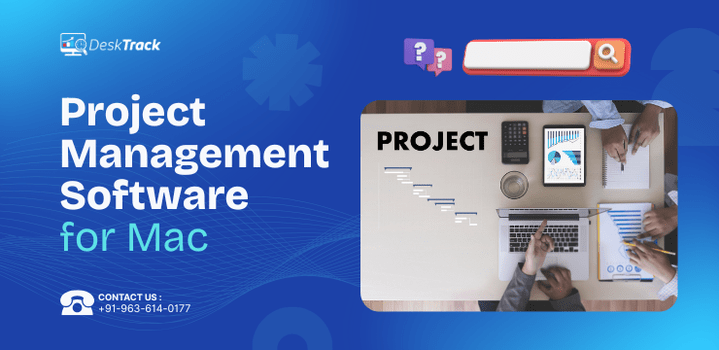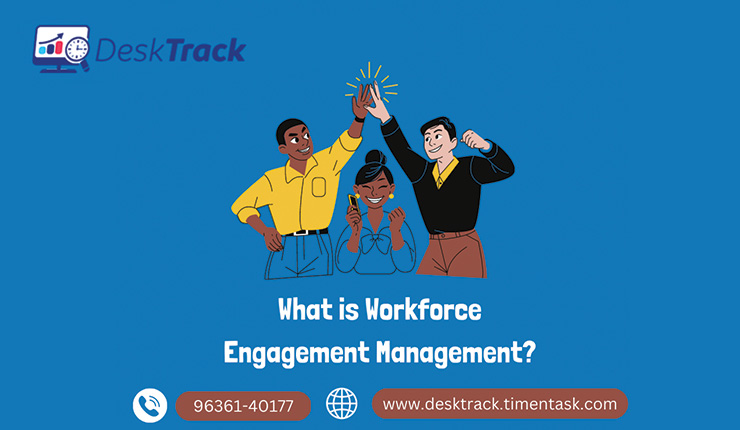
Workforce engagement management (WEM) is an exclusive terminology to check and improve customer service agent engagement.
An engaged agent is committed to his employer which simply means that he is also contributing a lot to meeting business objectives for his organization.
In a contact center, the terminology typically means accomplishing exceptional customer service and individual KPI targets.
What is Workforce Engagement Management?
The question is “What is workforce engagement management?” Workforce engagement management as a concept is an evolution from ‘workforce optimization (WFO)’ which was about optimizing labor productivity and labor cost management.
The purpose of workforce engagement management was to improvise and optimize the processes like hiring, onboarding, training, scheduling, developing, motivating, and more.
Besides, Gartner coined the term to refer to a set of software tools that are featured to optimize and improvise agent engagement throughout the employment life cycle.
The evolution was targeted at changing agent demographics and addressing the high employee turnover rates that were exponentially higher in contact centers.
WEM not only includes a labor-management component, but also it focuses on performance and quality management.
Workforce engagement management is one of the promising concepts that increase agent engagement and retention.
Additionally, they have been proven to support other significant contact center goals.
The organizations implementing a holistic approach to WEM ensure that there are no gaps in the solution set for workforce engagement management.
What does Workforce Engagement Management (WEM) do?
Organizations have multiple purposes to use workforce engagement management (WEM) tools mentioned below:
Planning workforce requirements and employee rosters.
- Automatic Routing of customer questions/requests to specific customer service representatives based on expertise.
- Recording calls between customers and customer representatives for employee monitoring and quality and training purposes.
- Providing product training to customer agent employees.
- Tracking their performance and productivity.
- Evaluating customer satisfaction after a customer service interaction.
Employees can also access internal messaging solutions to share information and product knowledge along with automated routing of customer service assignments.
Additionally, Self-serve options and chatbots also contribute to reducing customer service teams’ workloads by assisting customers with common issues without any requirement for customer service representatives.
Hence, customer agent employees spend more of their time helping customers with unique needs and adding more value to the customer experience, which ultimately also reduces employee burnout.
Why Workforce Engagement Management Matters?
Workforce engagement management is nothing but yet another means to increase human motivation. More importantly, they go beyond external means to enhance balancing efficiency and effectiveness in the workforce.
WEM unleashes the X factor of agents that are empowered, happy, and working towards personal and team goals, transforming average contact centers into best-in-class performers.
Multiple aspects of the modern customer service center – such as access to new digital channels – are important stakes and are meant to simply meet customer expectations and achieve customer satisfaction.
But to promote customer happiness, loyalty, and higher lifetime spending, nothing short of exceptional service – provided by highly skilled agents demonstrating empathy and problem-solving abilities – will do.
In short, workforce engagement management matters because employee experience matters.
Therefore, there’s an urgent need to empower, engage, develop, and retain agents to accomplish great customer experiences.
Major reasons why agent experience is at the center of WEM applications are:
- The labor shortage scenario creates an environment where employers must compete to attract and retain staff.
- Engaged agents enjoy longer tenures with their employers, resulting in lower turnover rates, which in turn result in reduced costs of operations and improved CX delivery by more experienced, knowledgeable agents.
- Employers enjoy a significant advantage by recruiting and developing a skilled workforce to deliver a higher quality of service and improve the business holistically.
- Empowered and engaged workforce analytics performs better which results in a direct improvement to the bottom line since customer experience is one of the most reliable sources of a business’s competitive scenario.
These forces are so effective that organizations are going beyond workforce optimization and seeking out ways to deploy workforce management software in their organization, either as a comprehensive, integrated suite or by adding stand-alone applications.
The Digital Era of (WEM) Workforce Engagement Management
With the increase in digital customer service, there is a call for a comprehensive WEM provision to exist.
Whenever digital channels are managed ineffectively – whether in terms of forecasting, scheduling, evaluation, or coaching – they are another mode of frustration that results in poor business results. However, when done right, they are fuel for efficiency, satisfaction, and growth.
Such channels bring new metrics, standards, and challenges to which agents must be trained enough to adapt quickly.
Customers expect agents to handle customer contacts via live digital channels to convey high levels of empathy while resolving issues efficiently. This new plethora requires contact centers to scale up and improvise their game.
The right workforce management application gives agents the ability to better manage their time and work process across multiple channels.
The workforce not only gets the opportunity to take a break from handling live interactions but also gets to respond to the email channel for a period which is good to improve agent satisfaction and retention rates.
Besides the WEM solution, a quality management solution is also meant for the digital era that can identify gaps in agent performance and that is where agents learn to interact with customers via new and emerging channels like web chat and SMS.
These two crucial applications of workforce engagement management – WFM and QM – work complementary with add-on applications, such as coaching, learning, performance, motivation, and feedback. To put it in a nutshell, these applications enable contact centers to take operations to an advanced level.
A Holistic View
To seek a complete understanding of the question “What is workforce engagement management?” we need to have more understanding of WEM as mentioned below-
Overall, WEM is a holistic solution process that supports every component of the employee experience.
The advanced set of applications offered by WEM lets contact center performance reach exceptional levels of performance that were previously unattainable.
Besides, it improves employee performance and enables organizations to become employers of choice.
The ultimate benefit delivered by WEM is a sustainable competitive advantage through improved customer experiences.
6 Methods of WEM to Help Contact Centers Reach their Goals
- Increased agent engagement & retention – Agent engagement and retention rate are positively impacted due to workforce engagement management. This also results in effective scheduling, constructive feedback, and empowering agents to take ownership of their work.
- Employee engagement also called the workforce engagement process includes a quality management process as one of its parts. The purpose of this process is to set targets for employees to achieve quality scores. This is done with the help of some employee productivity monitoring software that is meant to streamline the process, coach employees, and help the organization to meet its targets.
- Customer Satisfaction – One of the reasons why employee engagement is important is customer satisfaction. It is said that “customers are god”.Therefore, when the workforce is voluntarily engaged to achieve their set targets, the results can be observed in the form of higher customer satisfaction scores.
- Budget – The workforce management software is designed in such a way that it looks after budgeting part of labor cost. In other words, it includes calculating the per day cost of employees as per the contribution made by them in the form of productivity.
- Abandon rates and queue time – This parameter ensures that agents in the contact center are not understaffed. In case of an understaffed situation, queue time is increased, hence leading to increased abandon rates.
- Compliance – Not only contact centers but any organization would not want to reveal their sensitive information to any unauthorized person. Therefore, it includes contact centers to comply with relevant laws and regulations. Besides, the recording and screenshot feature in such organizations is mainly meant to keep compliance on track.
Crucial Elements of Workforce Engagement Management
Every organization has its style of boosting employee engagement within their employees. But below are some crucial elements of workforce engagement management to consider:
- Recruitment and onboarding – This is the very initial phase when an employee should be made aware of clear expectations about his targets to achieve set goals. This should be backed with comprehensive training and a chance to ask for clarification. You should ensure that your staff becomes familiar with the tools and processes used in your organization.
- Evaluation & Improvement – Any evaluation is complete when the staff and the manager are aware of the metrics that are used to measure an employee’s performance. Also, both should be aware of what represents a good or bad score. Therefore, to meet the above requirements, the employee time tracking software is used with centralized analytics to check top performers and employees who are struggling and define protocols for improvement.
- Performance management – Performance management is all about accessing a smart coaching tool to address the issue that a manager spots or any challenge faced by an employee. One such method is gamification to boost employee engagement.
- Time management – Time management is a complete package of contact center forecasting, scheduling, and day-to-day management of call volumes and forecast of targets accordingly.
- Task management – Task management is nothing but yet another solution of WEM.
- It includes spreading and allotting tasks fairly as per the employee’s role and the burden of tasks on him. Also, it includes agent-assistance tools, enables shift-bidding, and schedule swapping of tasks along with empowering employees to tweak their task load.
- Employee Recognition – Not merely for contact centers but for any organization employee recognition should be a necessary practice to happen.This practice gives a sense of belongingness and gives voice to employees to come up with constructive feedback and have their say.
Are you ready to improvise your method of workforce engagement management?
If the answer is yes, then we have DeskTrack in your service to fulfill the requirement.
The below-mentioned features of this workforce engagement management tool prove to be relevant to becoming a first choice for your contact center or organization:
- Attendance Report – This report gives a detailed analysis of employee attendance for a day which includes First Activity by the employee, Last Activity, Total time, Desktop time, Idle time, Productive time, Unproductive time, Productivity in percentage, Extra time, login logout status and Working status of the employee. Hence, using this report, a well-structured strategy for employee time tracking management can be worked out.
- User productivity report – Yet another method of how employee engagement can be measured is through this user productivity measurement report which provides a graphical representation of employees’ performance daily.
- Manual Timesheet – Through this feature, task management and project time tracking for employees can be done. It includes Project Name, User Name, Date Range, Activity Date, Total time, Desktop time, Idle time, Start time, and End time.
Monthly Analysis Report – This report gives a complete detail of employees’ productivity and availability at work which makes it easier for the management to analyze employees and do employee recognition for top-performing employees. Besides, it makes it easier for the managers or supervisors to work on the employees who are underperforming or struggling to deliver the best of their performance.
